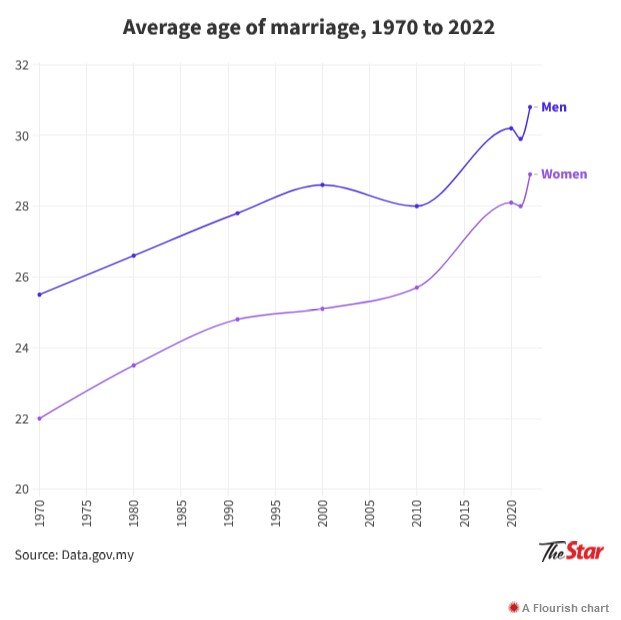September 2, 2024
PETALING JAYA – Terengganu, Kelantan and Pahang are the only states still producing enough babies to replenish their respective populations amid a rapid decline in Malaysia’s fertility rates.
According to the Statistics Department, 13 states and federal territories have total fertility rates (TFRs) that have dropped below the replacement level of 2.1 babies for every female aged 15 to 49 years.

The TFR is the average number of children a woman has in her lifetime, while the replacement level is the fertility rate at which a population exactly replaces itself from one generation to the next.
“Only Terengganu, Kelantan, and Pahang are recording a TFR above the replacement level,” chief statistician Datuk Seri Dr Mohd Uzir Mahidin said in a video presentation announcing Malaysia’s population trends.
Penang and Kuala Lumpur are the worst hit with a fertility rate of 1.2 children each, followed by Sabah (1.4).
“Sabah recorded the fastest declining TFR, with 5.5 children in 1980 and 1.4 children in 2022,” said Uzir.
Terengganu, meanwhile, has the country’s highest fertility rate of 2.9 followed by Kelantan (2.7) and Pahang (2.1).

Mohd Uzir said Malaysia’s overall TFR began to drop below 2.1 in 2013, adding that the decline could also be seen happening across ethnic groups.
“Between 1980 and 2022, the TFR for all main ethnic groups has been declining.
“The trend of TFR for all ethnic groups except for Malays is below replacement level.

“The Malay ethnic group recorded the highest TFR of 2.1 in 2022, while the Chinese ethnic group recorded the lowest TFR at 0.8 children for every woman aged 15 to 49,” he said.

The declining fertility rates means that the average size of a Malaysian family has also got smaller.
A household in the country in 1970 would typically have more than five members (5.5).
Now, the average household size is 3.7 persons.
Perlis has the smallest household size at 3.1 persons, while Kelantan has the biggest at 4.8.
Universiti Putra Malaysia’s Malaysian Research Institute on Ageing (MyAgeing)’s senior research officer Chai Sen Tyng said the main reason for declining fertility rates is the decline or delay in marriages.

“It is not all on married couples,” he said.
Based on the Statistics Department’s data, the average age of marriage for men is 31 years old, while women would typically get married at age 29 – compared with 1970, when women would get married at age 22 and men at 26.
Chai said couples who decide not to have children are not the main factor behind declining fertility rates.
Instead of the high cost of living and cost of raising children, the main reason couples decide to have fewer children is changing values and beliefs, he said.
“To say people have fewer kids because of the high cost of child-rearing sends the wrong message.
“A lot of modern parents keep trying to buy the most expensive items for their children when it is mostly a consumer trap.
“It is natural to want only the best for our children, but what kids actually want most is our attention and time,” he said.
Chai said some couples may decide to have fewer children due to competing career demands or because of concerns over future higher education costs.
He added that the fertility decline is a trend that cuts across all ethnic groups but the reason people have children changes over time.
“The reason why the poor have more children might be due to a lack of family planning, but the reality is that in agricultural societies, having more children means more hands to help and as insurance for old age,” he said.
Fertility rates and the decision to have children are also influenced by women’s education levels.
Chai said educated women have options and may not want to be tied down to childbearing or childrearing.
“Women don’t want to get married and get trapped if they get the short end of the stick.
“Educated women have options and I think this is key. Men have to realise this,” he said.
He added that to stabilise the fertility rate, the government can give cash incentives, provide better family or parental leave, and make more childcare services available or accessible.
Instilling positive family values such as encouraging kinship in a family could also encourage couples to have more children for the right reasons, he said.
Currently, Malaysia’s TFR is the third lowest in Asean after Singapore and Thailand, at 1.6 children.


